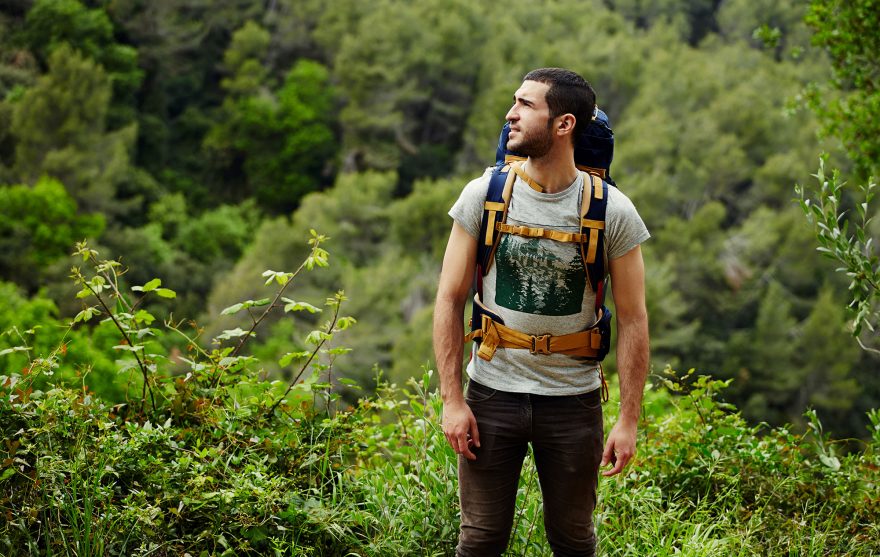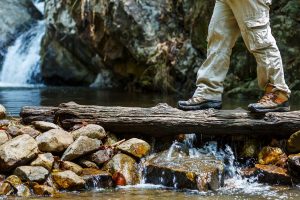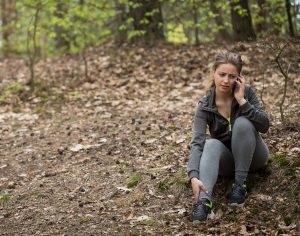
Depending how far you are into the backcountry, a serious injury can be one of the most frightening experiences you can have. An injury puts you at a disadvantage both physically and mentally — it leaves you vulnerable in an area where vulnerability can have serious consequences. In the wilderness search and rescue community, many of the people who haven’t returned from the woods as expected are either lost, injured or both. And that’s a combination we have to treat with urgency.
This is the third article in a series about Search and Rescue (SAR), with the primary focus of helping readers prepare for issues to prevent them from becoming life-threatening issues. In this series, I address preventative SAR by exploring the following topics: (1) Preparing for an outing; (2) Don’t get lost – stay found; (3) What to do if lost or hurt; (4) Track for fun while out and about; and finally, (5) Natural navigation tips.
The last article discussed pre-planning for your outing, which included informing people of your plans and intended return time. You’ll see the importance of that in this article when I discuss becoming lost or disoriented, needing help because of unexpected circumstances, and how to get help sent to your location quickly.
Part 3: What If You Get Lost or Hurt?
Disoriented
Despite being a professional search and rescue volunteer, I have become disoriented many times in the backcountry. It is an entirely uncomfortable feeling. When the first feelings of disorientation arise, seek landmarks that are on/near places like trail intersections and creek crossings. Or seek areas in the vicinity of cell towers, mountain tops, unique trees, etc. that can help re-orient you. Without those, backtracking is the best approach to getting un-lost.
The process of getting lost usually unfolds slowly. The typical steps are: departing from a starting point, making a conscious or accidental error at a point of decision (like a trail crossing or stream crossing), continuing despite an uneasy feeling, then perhaps eventually acknowledging the dilemma. (Each of these concepts are explored thoroughly in a two-day course I teach entitled Lost Person Behavior, based on a book written by SAR expert Robert Koester.)
Recovery from disorientation is easier said than done and would take much more than the length of this article to sufficiently explore. Basically, returning to a point where you can say “I know where I am” yields better results than trying to press forward and hoping to unlose yourself.

In Need of Help
If the need to abandon your plans happens, there is often the debate of staying still or moving. The correct answer to that depends on several variables. Will moving cause you more harm? Does someone know when you are supposed to return, and what to do if you don’t? Usually sheltering in place saves your already limited energy, which helps you survive longer. If you are a stationary target, you will also be found quicker than if you were moving.
Here is where I will remind you to tell someone your travel plans, including expected return time. If you encounter unexpected circumstances and need help, that help can get to you much faster if someone is able to alert them. There is no law that police must wait a certain time before responding to a request for resources to search for a missing person. The sooner those resources are informed that you need help, the sooner they can respond and locate you.
Using a cell phone is a typical go-to resource for calling for help … if it has battery power and reception. Even if you do not have signal, there are several reasons to call 911. First, dialing 911 on any cell phone reaches all cell providers’ networks, not just yours. In other words, even if your network may not have signal in your location, others might. Second, when a 911 call is made, your phone automatically turns on its Global Positioning System (GPS) function and sends a location with the call.
Here’s an important addition: When a GPS device is first powered up, it may not have the correct location. Most GPS devices take a minute or more to get an accurate location fix. The take-home point is the following: A few minutes after your first call, call a second time to ensure an accurate location. Lastly, after the first couple calls, try to use texting to communicate. Texting requires less signal strength and preserves the battery power for longer. If the rescue will take more than 12 hours, it may be advantageous to put your phone on airplane mode for most of the time and devise a plan with rescuers to take the phone off airplane mode every couple of hours for short-duration updates.

Signaling
If the cell phone isn’t working, there are many ways to bring others’ attention to you. One is to write messages using materials that contrast with the background, such as logs on sand or bark in snow. HELP or SOS works pretty well. If you must take cover due to the weather or other conditions, displaying something bright and visible from as many perspectives as possible will help draw rescue resources to your location. Having a whistle as one of the 10 essentials discussed in the first article also comes in handy in this scenario.
Consider another option as a last resort: My and other Search and Rescue teams have found missing persons after they started a fire. It is better to put green boughs on a fire to produce smoke, but any fire will get the attention of most people, especially searchers.
I hope you don’t need these suggestions, but in an unexpected time of need, they could be helpful. Safe travels.
Rob Speiden is a professional search and rescue volunteer who has participated in over 330 searches since 1993. He teaches land navigation, tracking and other SAR classes for both the Virginia Department of Emergency Management and his own Natural Awareness Tracking School. Rob has written two books on tracking humans for SAR: “Foundations for Awareness, Signcutting and Tracking” and “Tracker Training.” More information about Rob’s books and classes can be found at www.trackingschool.com.
 Your Privacy Choices
Your Privacy Choices